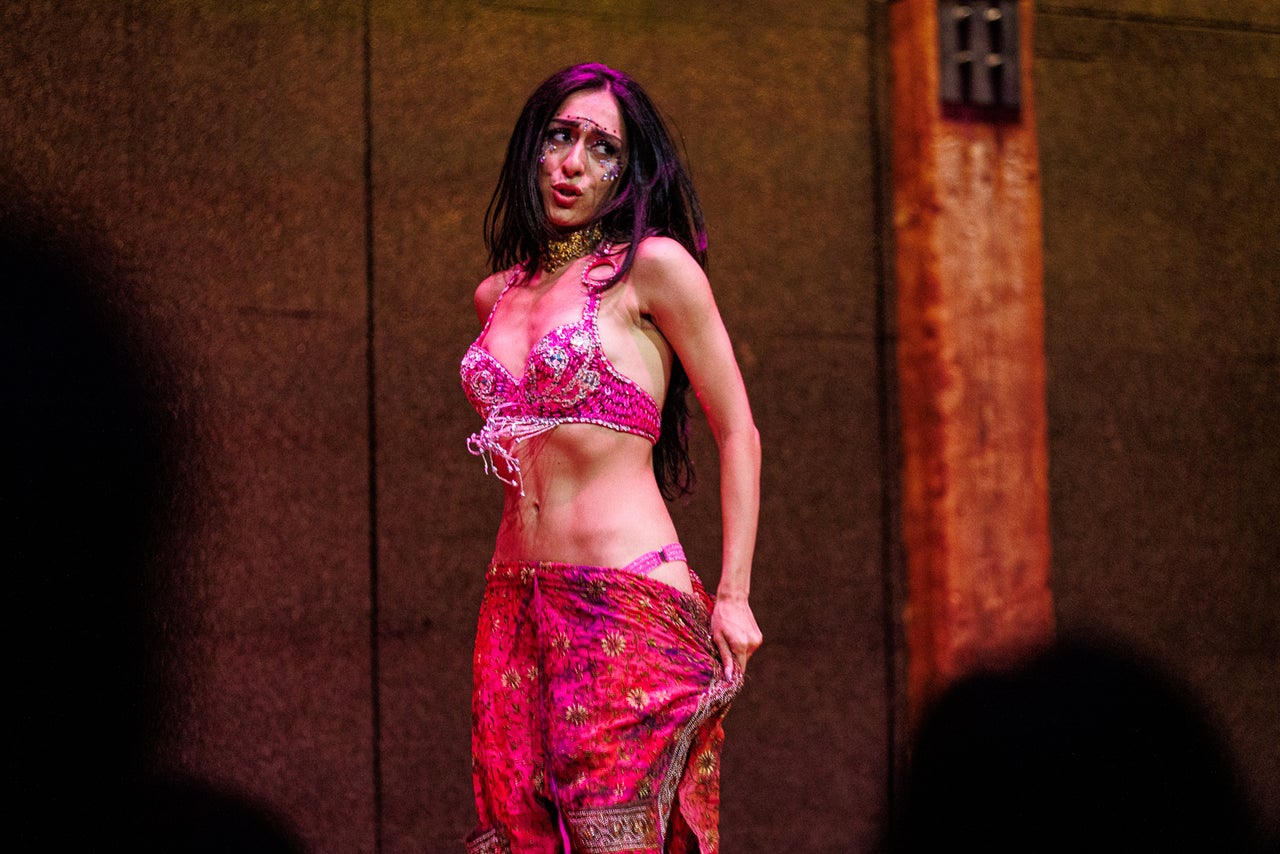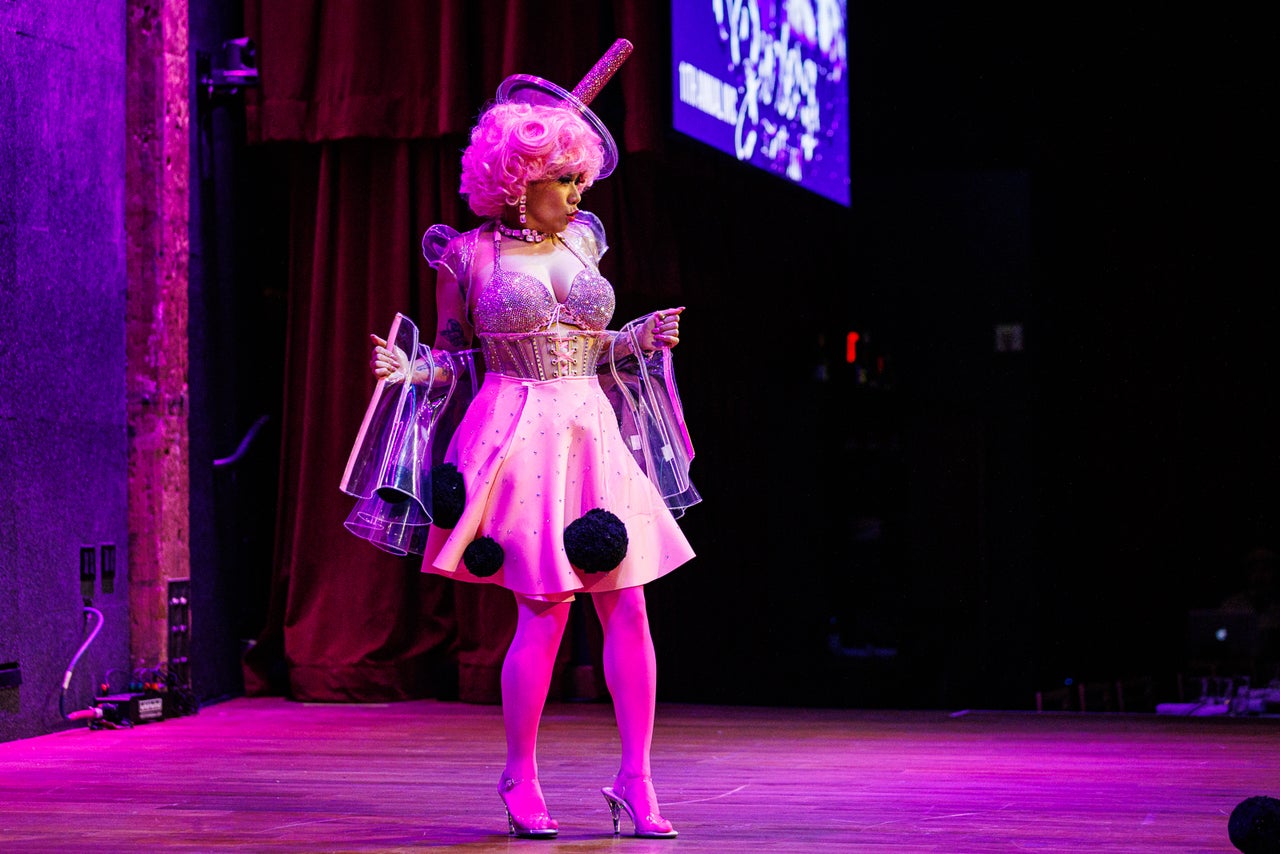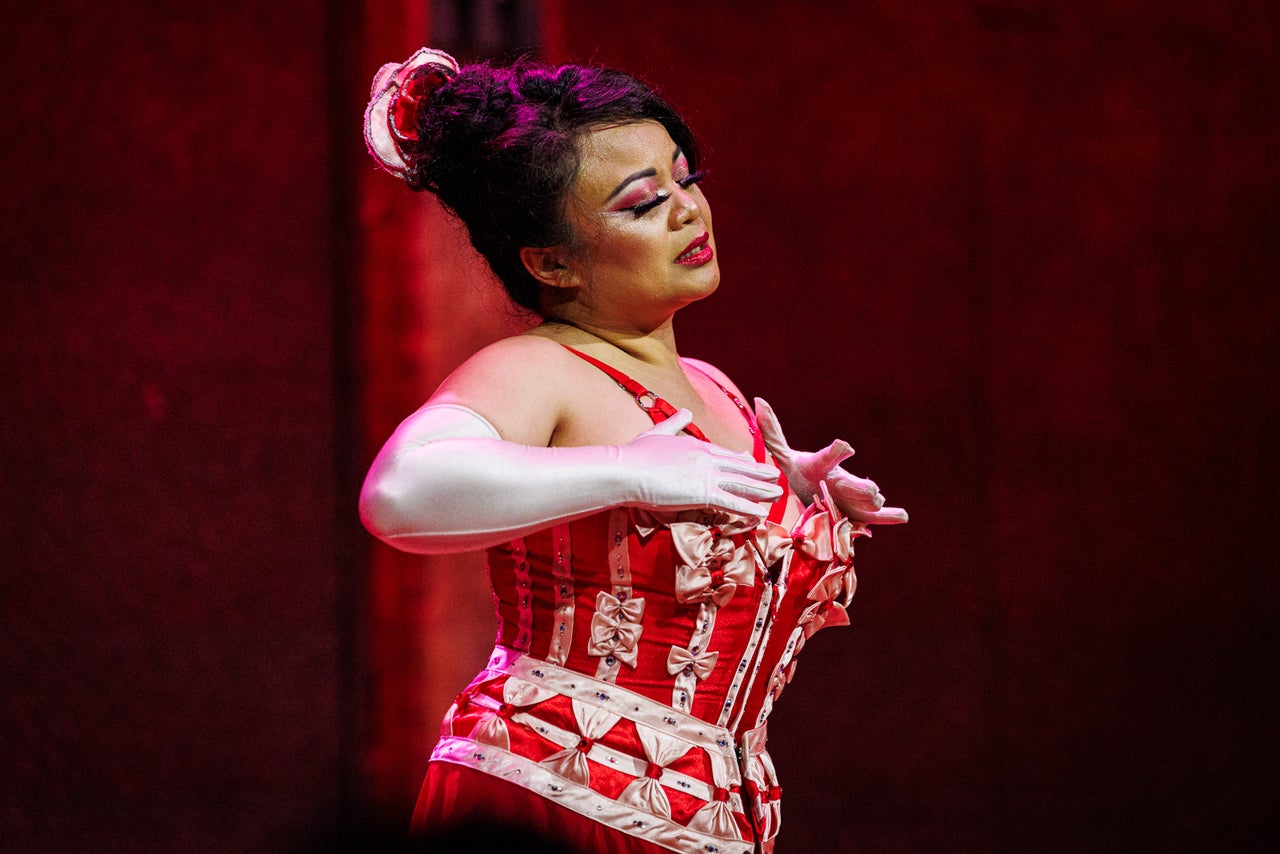Meet The Women Using Burlesque To Channel Their Most Authentic Selves
As the daughter of a traditional Indian dance instructor, Padma C. has been performing on stage since she was 3, and she exudes a confidence that reflects years of experience. This confidence, she found, resonated even when she began dancing on a far less traditional stage. To kick off her performance at New York City’s Asian Burlesque Festival last month, the 26-year-old walked directly to the center of the floor in a pink and white lingerie set, lightly concealed by a rose-colored Indian dupatta.
Padma, who asked to conceal her full name to protect her identity at her day job, is among a growing number of AAPI women delving into burlesque, using the art to cultivate a new relationship with their ethnic identity — especially the parts that feel confining or oppressive. Being immersed in the burlesque community, I’m told by several Asian American burlesque performers, also gives them an avenue to subvert race-based stereotypes that pin them as subservient and docile.
Padma felt trapped growing up. She described herself as the rebel of her culturally conservative Indian-Greek family; as a teen, she loved wearing heavy makeup and revealing clothing. Her mother would hear rumors about Padma’s behavior from the “auntie brigade” — the clique of mothers who subsist on gossip — at their local Hindu temple in Flushing, Queens. “‘Did you see her? She was wearing this type of shirt. She was also walking with this boy. You have to check her phone.’” Padma said, mimicking the women’s petty comments. “It was exhausting.”
When she moved from Staten Island to Manhattan at 19, her exploration of the city’s nightlife led organically to burlesque. She recalls seeing the dancers on stage at the Duane Park supper club express her bodies in a way that felt both empowering and somehow, accessible. “Each performer was sensational,” she recalled.
But Padma didn’t want to abandon her traditional performance background entirely. Indian dance was how she connected to her heritage. It was how she fell in love with performing in the first place. And so she began exploring what balance would look like — and what it would mean to channel her feminine power without abandoning the cultural traditions that felt sacred.

And so, she found a place in the contemporary burlesque community. At her most recent performance at the festival, Padma’s routine included the elegant, precise moves of Bharatanatyam, the South Indian dance style she learned growing up, with the sensual striptease that is characteristic of classic burlesque.
“It was only until I started burlesque that I could take control and incorporate my own sensuality and my culture,” she said. “I finally was able to combine these worlds together.”
This creative agency makes burlesque a unique outlet for performers of structurally marginalized identities, according to Jo Weldon, the founder of the New York School of Burlesque, one of the city’s longest running burlesque academies. Weldon, 60, encourages her students to bring their whole selves to the practice, drawing from past experiences to add authenticity and beauty to their performances.
“They get to choose the music, assemble the costume, and create the choreography,” she said. “They get to tell their own stories.”
For other AAPI burlesque performers, comedy is key to the burlesque experience — and to healing. And the concept isn’t new; in the mid-17th century, burlesque performance was often used to mock the unattainable, pompous lifestyle of the bourgeois.

A veteran burlesque dancer and founder of the Asian Burlesque Festival, Calamity Chang loves how burlesque performers, through exaggerated movements and storytelling, inspire genuine laughter. “In the past I’ve always felt like my sense of humor is too nasty or like I talked about sex too much,” she said. “When I joined the burlesque community, that was the first time I felt like people understood me.”
Onstage at the festival, Chang donned a curly pink wig with a sequined plastic straw sticking out of it, personifying a bottle of bubble tea. As the raucous crowd egged her on with hoots and whistles, she sultrily removed the black boba balls that were taped onto her iridescent sequined dress. She looked back at a packed theater, full of people of Asian descent of all ages, with a playful tease and a cheesy wink.
Chang champions the absurdity of her number — she’s dressed, after all, as a food item stereotypical to mainstream Asian culture. But it’s all by design. “I like the idea of being a sexy, edible woman. But this time, I’m the one in charge of conveying that image,” she said. For Chang and other Asian performers who decide to reclaim what has been used to ridicule them, the absurdity becomes a superpower.
Comedic expression is an underrated tool for AAPI performers, especially as their representation in media can be one-sided. A recent study conducted by the Geena Davis Institute on Gender in Media found that nearly half of Asian characters in film and TV over the past decade have been portrayed as the butt of a joke.

Across the board, burlesque has been a practice of self love for AAPI women. “I have been in relationships with men who treated me like I was supposed to leave my wants, needs and desires on the side in support of theirs,” said Lady Mabuhay, another burlesque dancer at the festival. During her performance, she gyrated to the beat of “Sex and Candy”; underneath her red corset was a harness, with its loud ruby hue glistening in the spotlight. As the guitar riff crescendoed, Mabuhay dropped to the floor, synchronizing her hips to the pulsating rhythm. The movements and intentions behind them implied a vow to herself — that she’d honor the relationship with herself above all else.
Burlesque has been a path to fostering a love for her own body that she couldn’t find elsewhere. Her power was undeniable, even to the people who may haven’t recognized it in her past.
“You can’t demean us. You can’t make us feel inferior for showing who we are,” she said.
Credit: Source link